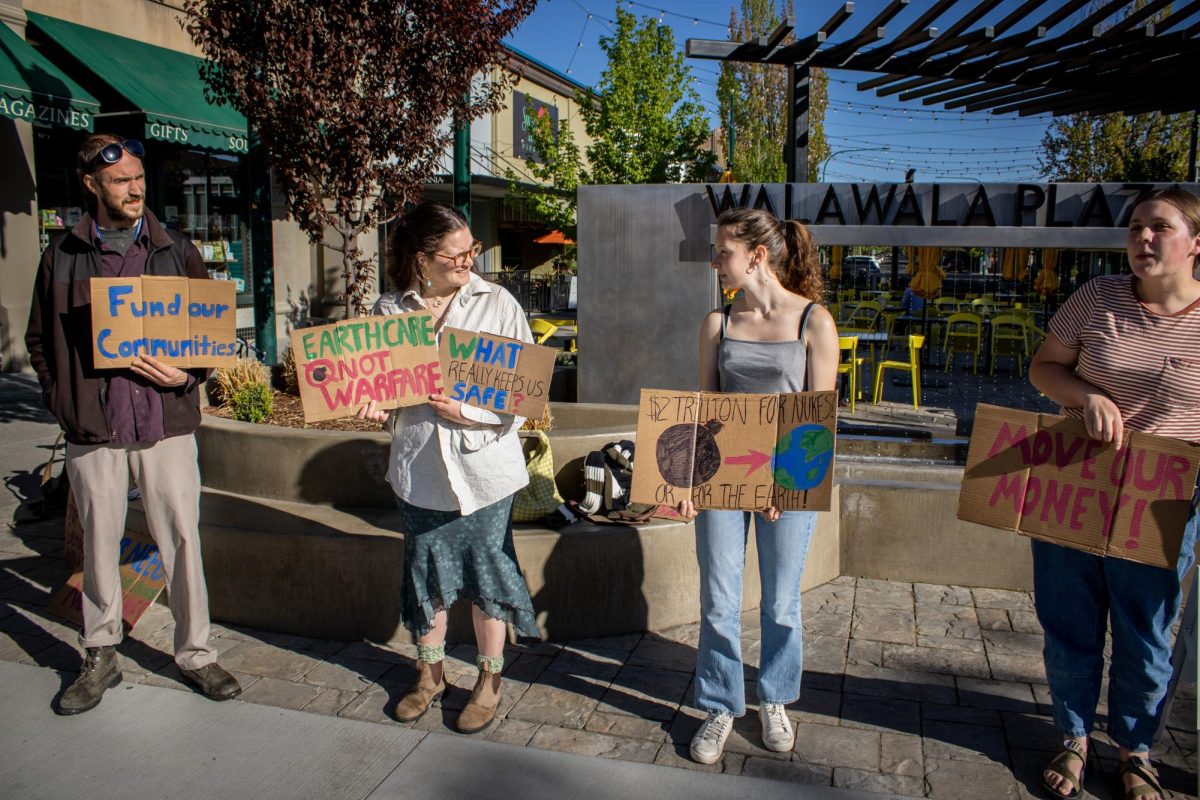Large signs and billboards advertise “beautiful new homes” while bumper stickers scattered throughout Walla Walla emblazoned with the anti-development message “Don’t Bend Walla Walla” represent perhaps today’s most pressing issue for Walla Walla: growth.
“The population [of Walla Walla] was relatively stable for a long time (20,000 or so, as I recall),” said Bob Carson, geology and environmental studies professor who has lived in Walla Walla since 1975 and whose wife, Clare, grew up in Walla Walla.
“It was about the same size as when Clare was a kid when I first got here, but then the population finally started growing. When I first got here there were three wineries. Now there are over 100,” Carson said.
Walla Walla, largely stagnant for decades, has seen a renaissance of growth in the past 15 or so years. A revitalized downtown coupled with Walla Walla’s new-found identity as a wine town has left the town overwhelmed as Walla Walla tries to determine what it hopes its future will look like.
“As far as businesses, Walla Walla grows very slowly. It’s very slow to adopt any kind of changes,” said junior Jared Burns, who has lived in Walla Walla since age 10.
However, Burns said, “Wine has definitely changed the face of Walla Walla in the past 10 years. There has always been some wine around, but for whatever reason, it’s gotten really big in the last 10 years.”
Senior Aaron David has noticed changes to the city over the course of his four years in Walla Walla. “It seems like every time I come back to school after the summer there’re more restaurants [downtown]. It seems like in the last few years it’s also gotten more expensive,” David said.
Affordable housing, or lack thereof, has been thrown into the spotlight as a result of recent development (and proposed development) in Walla Walla.
“In the last five years prices of land and real estate have skyrocketed,” said Burns. “People who work jobs like Wal-Mart and other retail jobs can’t really afford to live here anymore. I know people who commute from Waitsburg or Touchet where housing’s more affordable.”
The environmental impact of development also continues to be a vital issue.
“When you fly here you can see that Walla Walla is in the middle of a desert so that could put some strains on the resources,” said senior Annelle Mendez.
“As the community does grow, a big challenge would be finding water,” said David. “We don’t want to take too much water out of the aquifer. I think that’s a challenge that will need to be addressed.”
The influence of corporations, government and citizens plays an important role in defining Walla Walla’s future. Carson worries about the way recent decisions by the city council along with the county commissioners have affected Walla Walla’s path.
“The county commissioners: none of them are very progressive. For example, they just banned rock climbing at the Two Sisters where I taught my two kids how to rock climb, despite the fact that the Army Corps of Engineers gave the land to the county for a county park for that express purpose,” said Carson.
Carson believes that the city and county government “is basically a good ol’ boys network” which “fortunately or unfortunately [represents] the views of people in this area who basically want low taxes.”
“This town was based on the people who live here, not the government,” said first-year Susannah Frew, “and if you get the government involved it could become just another plain town.”
“I personally don’t want to see all the farms turned into subdivisions,” said David. “But I don’t think growth has to be inherently bad; it’s just a matter of managing it properly. The community needs to decide in a thoughtful manner how that’s going to happen. It needs to be the people who are real stakeholders in the community, not just the real estate developers making the decisions about growth.”
Junior Luke Sanford echoed David and Frew’s advice. Walla Walla needs to “make sure that growth comes much more from local initiatives with less of a corporate influence,” Sanford said.
As Walla Walla grows, the general cultural atmosphere has the potential to change as well.
“[Walla Walla] has definitely become more upscale, but I still see a large segment of the town is rural: the rural agriculture population is still a big part of the community,” said David.
City planners, according to Burns, want to make the Walla Walla vibe into “more of a preppy-wine retirement kind of thing,” which has resulted in “a lot of people who are just pissed off about this at the city.”
As Walla Walla looks to the future, there are no easy answers.
“I worry a lot about what the port commission [a local organization in charge of economic development for Walla Walla County] is doing. Their desire for growth isn’t always healthy,” said Carson.
“I also worry about the city council and the planners,” said Carson. “There were five alternatives to the current recycling system in the Union Bulletin the other day. More than one involved getting rid of curbside recycling. It also took an extra vote to get curbside recycling to be approved by the council after the people voted ‘yes’ for it. Saving money in the short term seems to be their main priority.”
Yet at the same time, Carson believes Walla Walla is on the right path. “I strongly believe that things have gone right in Walla Walla: we have a great public transportation system and a lot of really wonderful parks.”
“Growth in most places is kind of inevitable,” said David. “What makes it good or bad is how it’s planned.”





